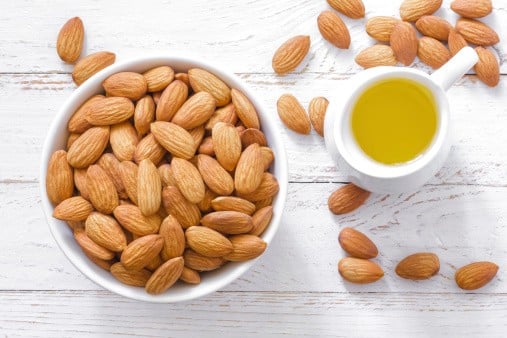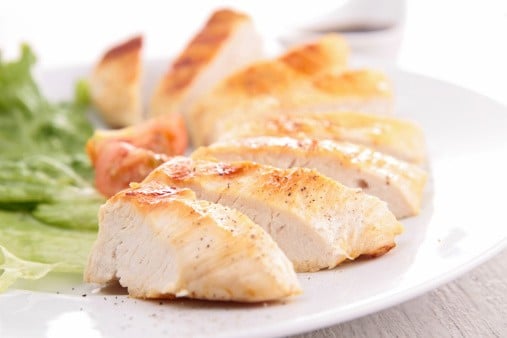When fulfilling our body’s natural hunger cravings, many turn to carbohydrates and processed foods to satisfy their appetite. Recent diet trends, however, have aimed their meal plans towards simpler, less processed foods. A specific diet that has attracted much interest is the Paleolithic diet, which is also commonly referred to as the Paleo Diet.
According to US News, the Paleo diet focuses on reverting back to the hunting and gathering mentality during the Paleolithic period. Their philosophy believes that if cavemen didn’t eat it, then you shouldn’t either!
The Paleolithic diet’s main goal is to help people live a healthier, fitter, disease-free life. A major benefit of switching to this way of eating is that it expels all unnecessary food content from your meals. For example, the diet is virtually sodium-free. American’s have been known to include too much salt in their diet. This is problematic because an excess of sodium can actually be very harmful to your health, especially if you are already diagnosed with hypertension, diabetes, or chronic kidney disease (US News). The Paleo diet is also known to be beneficial because of the amount of fruits and veggies it endorses. With a healthy portion of these food groups in your diet, you have better access to certain nutrients such as fiber and potassium.
Because of the high protein and fat content that this diet recommends, it is natural to be skeptical about how much weight you can realistically lose. It is possible, however, to maintain a healthy body fat percentage. Even though the Paleo diet doesn’t guarantee that you will shed any pounds, it has been researched to determine if there is any weight loss inclination. One smaller study by M. Osterdahl examined this effect with 14 medical student participants and observed subjects over a three week period. Results showed that the participants lost an average of five pounds.
If struggling with losing weight on this diet, there are certain precautions or effective ideas you can utilize. You should limit your snacks of nuts and fruits. Even though these foods generally tend to help satisfy hunger cravings, too many of them can give our bodies an excess of fats and sugars. Substituting darker greens for fruits or leaner meats for pork and steak are ways that lead you to healthier food choices. Avoiding alcohol can also lower your calorie intake that inhibits you from losing any weight. A lack of weight loss could be attributed to allotting for larger portion sizes. Listen to your hunger and determine how much food is really necessary for you to be content. Make sure that your diet is complemented with exercise as well. Exercise is definitely recommended due to the active nature of the cavemen during the Paleolithic period.
When making these big changes in your diet, it is important to be aware of any possible risks. Even though the Paleo diet focuses on “cleaner” foods, the lack of dairy and grains in your daily meals could lead to health problems. The lack of calcium you have access to is very limited because the Paleo diet does not allow you to have milk. This can be very problematic for those who are still growing since calcium maintains bone strength and ensures that all your muscles are functioning properly. It is also very difficult for you to get a healthy amount of Vitamin D when following the diet’s restrictions. Vitamin D supplements are typically suggested as well as five to 30 minutes of sun about twice a week.
US News Health and Wellness compares the diet’s recommendations and restrictions to the government’s dietary guidelines. The Paleo diet believes that 38 percent of calorie intake should come from protein, which is a little over the government’s suggested 10 to 35 percent. The diet is also higher in the recommended fat intake with 39 percent versus the 35 percent in the government’s guidelines. The advised 23 percent carbohydrate calorie intake, on the other hand, is way under the government’s amount of 45 to 65 percent. It would be incredibly valuable to talk with a doctor before committing to this diet. This way, you get a better understanding of how to make sure your body is receiving all its proper nutrients.
It may also be important to consider the costly effects that switching to the Paleo diet requires. Fully dedicating yourself to this diet can be pricey considering that the produce and meat departments tend to be on the more expensive side compared to other options in the grocery store. It is also more difficult to rely on cheap, convenient fast food or take out when grains, bread, and dairy are not viable choices for you to consume. At the same time, due to its overwhelming popularity, there are many sites and cookbooks that provide recipes which can help beginners. These recipe ideas can keep you organized and help you develop a structured, reliable meal plan.
Certain diets do not tailor to everyone’s nutritional needs, but if you are looking to cut down on more complex food choices and can imagine removing meals with large quantities of carbohydrates, then the Paleo diet could be the right fit for you.




